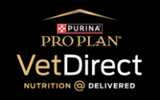Ration balancers are a source of confusion for many horse owners. Common responses I get when recommending a balancer for the horse’s diet are, “won’t it make him hot?”, or “isn’t that a lot of protein”. Let’s chat.
Protein is made up of amino acids the body needs to carry out normal functions and maintain normal muscle mass. Many horses only eating a low to mid quality grass or hay will carry a large belly and fat cover over the ribs, shoulder, and tail-head, but lose muscling over their backs and rump, particularly as they age. Two important points to consider with regard to protein in the diet: QUANTITY OF PROTEIN fed, and QUALITY OF PROTEIN fed. The quality of the protein in grass and hay changes as the grass matures. The protein in hay is altered by moisture and heat. Protein malnutrition is often the cause of muscle loss in horses that do not receive enough protein or are receiving lower-quality protein. A ration balancer can help fill in the gaps for these animals, providing a quality source of amino acids.
Ration balancers are often around 30% crude protein. They are designed to be fed at a low feeding rate – usually just 1-2 pounds total per day for the average 1,100 lbs horse. This is about 1-2 quarts per day, (one-third to one-half of the typical feed scoop total per day). I like to compare this to a protein shake for the horse. There is very little starch and fat in the ration balancers, so RATION BALANCERS ARE LOW-CALORIE. Starch and fat contain much more energy and contribute to horses “feeling their oats”. Do your kids feel more amped-up after eating a few chicken nuggets or killing a bag of skittles? Hide the skittles, Martha! The chart below compares protein amounts in differing volumes of feed, compared to a grass diet.

ONLY Feeding The Ration Balancer
One type of horse we like to feed with a balancer is the easy keeper who may be overweight. These horses often are fed restricted amounts of grass or no grass and are on hay only. Some of these horses wear grazing muzzles to prevent over-consumption of starch that may lead to laminitis (founder). If the horse is not consuming 2% of his body weight in forage per day, it is highly likely that he is deficient in the amount of protein his body needs. Many people will just give them a handful of a 10-12% protein sweet feed and call it good, but we are likely giving him starch and fat he doesn’t need, and still not getting him enough of the protein he requires (look back at the chart above). Forget the handful of sweet feed, just use a ration balancer in addition to the hay or grass grazing time recommended by your veterinarian.
SUPPLEMENTING With a Ration Balancer
Some feed rooms look like the cereal aisle at the grocery store – options, options, options. Beet pulp, rice-bran oil, oats, supplements, and several types of commercial feeds of various protein/fat combinations are common staples. If you have a horse for whom you are mixing different amounts of ingredients to add calories to the diet, a ration balancer is a nice way to ensure that he is at least getting his necessary levels of protein, vitamins, and minerals.
You can also add a ration balancer to a commercial feed. Oftentimes we do this for performance horses on an appropriate feed, but still needing extra protein to help maintain the muscling along the topline. We typically will feed a lower amount of the ration balancer to these animals, just 0.5 to 1 lbs total per day. This is essentially like a human athlete who eats a complete diet, but drinks a protein shake after a workout for the benefit of additional amino acid support.
As always, consult your veterinarian about your horse’s particular needs. When making a feed change, always do it gradually, starting with small amounts of feed and increasing it slowly over 7-10 days until the desired diet is achieved.

WHEN USED APPROPRIATELY, RATION BALANCERS ARE:
- Low calorie
- A good source of high quality protein
- NOT going to make your horse “hot”
- NOT going to be an overwhelming amount of protein
- Fed at lower rates (1-2 lbs total per day) compared to other grain/feeds
- Able to be fed instead of grain, with adequate hay or grass, to fill in the gaps of the diet.
- Able to be fed as a supplement to other feeds for extra protein support.

 Phone: (828) 738-3883 | Fax: (828) 270-3213 Email:
Phone: (828) 738-3883 | Fax: (828) 270-3213 Email: